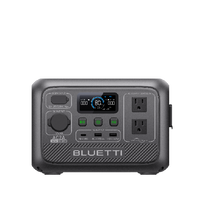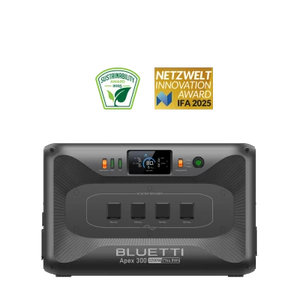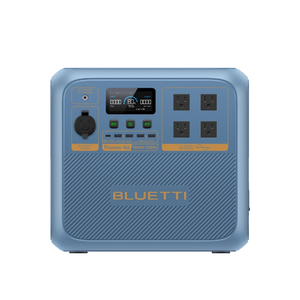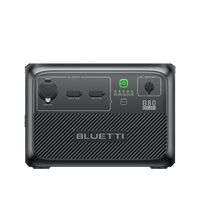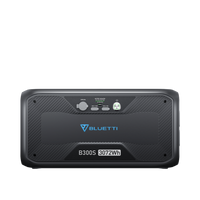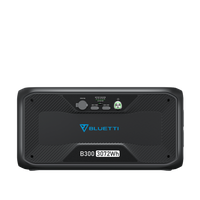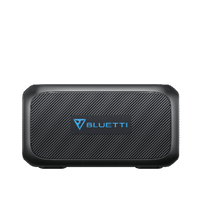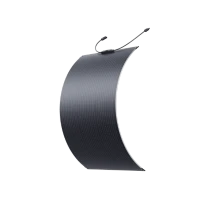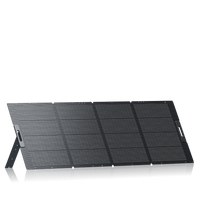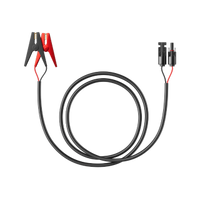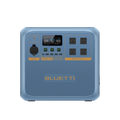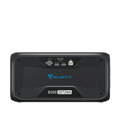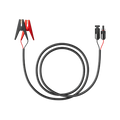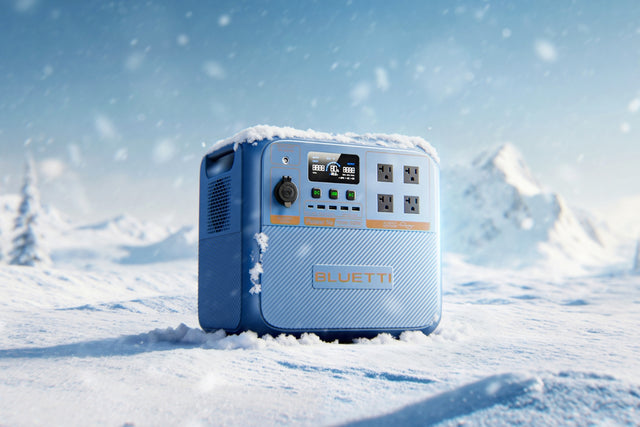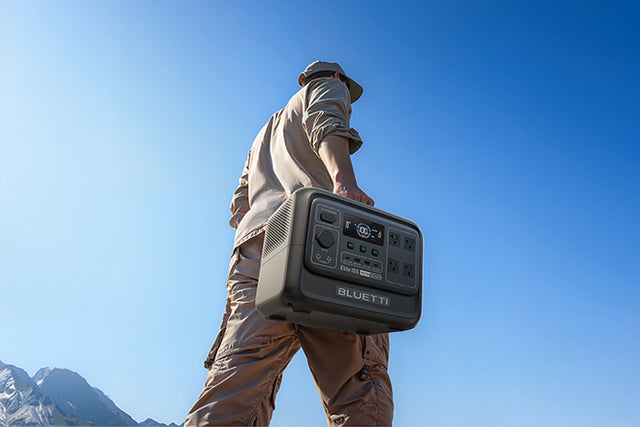Your cart is empty
Shop our productsIt's a question all households have when it comes to their electricity bills – what appliances use the most electricity? Identifying which appliances use the most electricity can be a great way to start making changes to reduce your electricity bill and become more energy efficient. In this article, we will look at the top 10 appliances that use the most electricity in the home in order to help you understand how to be smarter with your electricity consumption.
How much do appliances cost to run?
The amount of money you spend on electricity for your appliances depends on how much they are used and how much electricity they consume. There are several ways to calculate the amount of electricity an appliance is using, one of which is the ‘appliance power usage’. The amount of electricity an appliance consumes is usually measured in watts, and it depends on the size and type of appliance. The ‘typical usage’ of an appliance will provide you with an estimate of how much it is used on a daily basis. This estimate can be used to calculate an annual running cost for each appliance.
When calculating how much an appliance will cost to run in terms of electricity, it is important to take into account the wattage of the appliance. The higher the watts, the more electricity the appliance will use, and the more it will cost to run. It is also important to consider the age and type of the appliance when calculating its energy costs. For example, an older appliance may be less efficient than a newer one, and this should be considered when making calculations.
When estimating the annual running costs of an appliance, it is also useful to look at its ‘typical usage’. This gives an indication of how often the appliance is used and how much electricity it draws. This can provide helpful clues for calculating the energy costs of an appliance. It is also important to consider the size of the appliance, as larger appliances will typically consume more electricity.
In order to accurately calculate the electricity costs of an appliance, it is important to consider all of the factors mentioned above. By taking the time to calculate the wattage, typical usage and size of the appliance, you will be able to estimate the annual running costs of the appliance and determine which appliances are using the most electricity and costing you the most money.

How much energy does a television use?
A television uses a significant amount of energy compared to other household appliances. The type of technology behind a television affects how much energy it uses. Older CRT televisions used the most energy, followed by LCD televisions. LED televisions are the most energy-efficient option. The size of the television also plays a role in how much energy it uses. Generally, larger televisions use more energy.
Typically, a 32-inch LCD television uses about 70 watts, a 42-inch LCD television uses 90 watts, and a 50-inch plasma television uses 170 watts. The energy consumption of a television is also affected by what you are using it for. Watching movies or playing video games can use more energy than watching regular television. On average, a television set uses approximately 1 kilowatt hour (kWh) per hour when it is turned on.
it is important to understand how much energy a television uses when it comes to your overall energy bill. It is recommended to consider an energy-efficient television, such as an LED TV, if you are looking to reduce your energy costs. Additionally, be aware of how much you are using your television and how much energy it is consuming while in use.

How much energy does a fridge freezer use?
Fridges and freezers are part of the home appliances that use the most electricity. In fact, they account for up to 17% of the total energy consumption in a home. The amount of energy used depends on the size and model of the appliance, but a standard fridge-freezer will typically use around 340 kWh of electricity per year. This equates to a cost of around £50-60.
The type of fridge freezer will also affect the amount of energy it uses. For instance, a typical combined fridge-freezer will use less energy than a side-by-side model. The age of the appliance is also an important factor, as older fridges will use much more energy than newer, energy-efficient models. Newer models often have special settings that can reduce energy consumption, such as a holiday mode for when the fridge isn’t in use for extended periods.
The size of the fridge also has an impact on energy consumption. Larger fridges tend to use more energy than smaller models of the same type, and this can make a big difference to the total energy bill. Generally, fridges that are less than 200 litres in capacity tend to use around 250 kWh of electricity, whereas larger fridges can use up to 500 kWh per year.
it’s important to make sure the fridge or freezer is kept in good condition. Regularly cleaning the condenser coils and ensuring the seals are tight can help reduce energy consumption. In addition, keeping the fridge or freezer in a cool environment can help reduce its energy use.
By taking into account the size, type and condition of a fridge or freezer, it’s possible to estimate how much energy it will use each year. By investing in an energy efficient appliance, it’s possible to significantly reduce energy consumption and save money on electricity bills.
How much energy does an electric hob/oven use?
The amount of energy that an electric hob/oven uses will depend on the size, type, and age of the appliance. Generally speaking, electric hobs/ovens can consume anywhere from 1.5 to 3.0 kilowatts of electricity (kWh) per hour. This means that when the appliance is in use, it is consuming approximately 1.5 to 3.0 kWh per hour. For comparison, a dishwasher consumes 1.1 to 1.6 kWh per hour on average.
When the appliance is in use, the energy consumption will depend on how high the heat is set. For instance, a standard electric hob/oven may use 1.5 to 2.0 kWh per hour on low heat and up to 3.0 kWh per hour on high heat. This means that switching to a higher power setting will use more energy.
Electric ovens, on the other hand, may consume 1.5 to 2.4 kWh per hour when in use. The energy consumption will depend on the type of oven – whether it has a fan, a convection system, or no fan at all. In general, ovens that use electric fans consume more energy than those that don’t. To save energy, you should consider turning the fan off when cooking for shorter periods of time.
It is important to note that most electric hobs/ovens come with an energy rating, which is typically listed on the appliance itself or in the instruction manual. This rating will give you an indication of how much energy the appliance uses when in use. To save energy and reduce your electricity bill, it is a good idea to invest in an energy-efficient electric hob/oven.
When it comes to using an electric hob/oven, it is important to ensure that the appliance is used correctly. This means that it should be properly preheated before use, the heat settings should be correct for the type of food being cooked, and the cover should be kept closed as much as possible to trap the heat and reduce energy use. Additionally, any pans used should be the right size for the heat element – larger pans can cause the appliance to use more energy.
By following these simple steps, you can ensure that your electric hob/oven is being used efficiently and that it is not using more energy than necessary. Doing so will help you to save energy, reduce your electricity bills, and do your part in protecting the environment.

How much energy does a tumble dryer use?
Tumble dryers have become essential appliances in most households as they save time and help reduce the likelihood of clothes shrinkage. However, running a tumble dryer regularly can be costly, since these appliances can be big energy users. Depending on the type of dryer, size, and the amount of laundry, tumble dryers can use anywhere from 1.5 to 6.5 kWh per load.
The energy used by a tumble dryer is strongly dependent on the size of the dryer and the load of clothing. Smaller compact units will use as little as 1.5 kWh per load while larger dryers with higher capacity can use up to 6.5 kWh per load. Generally, the larger the load, the more energy required to dry the clothing. Another factor that can affect the amount of energy used is the type of dryer. Heat pump dryers are more energy efficient than conventional dryers, using around 1 kWh per load.
The type of clothing being dried can also affect the amount of energy used. Heavier items like jeans and towels will require more energy than light fabrics such as t-shirts. Generally, the longer the time taken to dry the load, the more energy will be used. That is why it is important to use the correct drying settings for each load, with settings that will allow the clothes to dry as quickly as possible while using the least amount of energy.
To save energy, it is important to take into account the type and size of the dryer, as well as the amount and type of clothing to be dried. Heat pump dryers are a more energy-efficient option, while larger dryers with greater capacity will typically use more energy than smaller units. Depending on the average use, it may be possible to save on energy costs by switching to a more efficient dryer. Generally, tumble dryers can use anywhere from 1.5 to 6.5 kWh of electricity per load.
More Energy-Saving Tips
One of the most effective ways to save electricity is to be mindful of the appliances and gadgets that use the most energy. While it is impossible to avoid using all energy-hungry devices, it is possible to reduce the amount of electricity they consume. There are a few simple tips that can help homeowners save electricity and money in the long run.
The first tip is to avoid buying new appliances that are not energy-efficient. Instead, choose appliances that are ENERGY STAR certified. This certification means that the appliance will reduce energy consumption and save money in the long run. Additionally, make sure to unplug any appliance or device when it is not in use - even appliances with LED lights can still be drawing electricity.
Another way to save electricity is to make sure that all appliances are regularly maintained and tuned up. Proper maintenance can help reduce energy consumption and save money, as it keeps the appliance running smoothly and efficiently. This includes replacing filters, wiping down the appliance exterior, cleaning the coils, and inspecting the connections for any signs of wear or damage.
consider investing in energy-efficient fixtures such as programmable thermostats, LED lights, and ENERGY STAR certified light bulbs. All of these products use less electricity than traditional fixtures and can help homeowners save money on their monthly utility bills.
By following these simple tips, homeowners can reduce the amount of energy their appliances use and save money in the long run. Not only can they help the environment, but they can also help save money. Investing in energy-efficient fixtures and regularly maintaining appliances can make a huge difference in the amount of electricity used and the amount of money saved.
1. What type of appliance uses the most electricity?
What type of appliance uses the most electricity?
The answer depends on many factors such as size, age, and average use. Generally, the largest appliances such as refrigerators, air conditioners, and stoves tend to use the most electricity. On average, refrigerators use about 16 percent of a household’s energy budget, while air conditioners, dryers, and electric water heaters consume about 13, 9, and 4 percent, respectively. In addition, the newer, energy-efficient models tend to use less energy than older models.
Also, the frequency of use makes a significant difference in the total energy consumption. The more an appliance is used throughout the day, the more electricity it uses. This means that if there are multiple people living in the same household, then multiple appliances will be used at the same time, drawing more power from the electrical system.
some appliances are inherently more energy-efficient than others. Dishwashers, for example, can use up to a third of the electricity of a full-size washing machine. Some newer models also have advanced technologies such as sensors that detect the size of the load and adjust the water and electricity consumption accordingly.
the appliance that uses the most electricity is dependent on the individual household and the appliances used. By paying attention to energy-efficiency ratings and looking for newer, more efficient models, households can save on their energy bills while still enjoying the comfort of having state-of-the-art technology in their homes.
2. How much electricity does an appliance typically use?
When it comes to electricity usage, one of the most commonly asked questions is “How much electricity does an appliance typically use?” To answer this question accurately, we need to look at the wattage of the appliance in question. The wattage of an appliance is the measure of energy used when the appliance is in operation, which is typically expressed in kilowatt-hours (kWh). It is important to note that wattage is not the same as voltage, as voltage is a measure of the force of electricity rather than how much electricity is being consumed. Additionally, wattage is typically expressed in terms of daily, monthly, and annual usage, so it is important to pay attention to the figures reported by the manufacturer in order to accurately determine an appliance’s electricity consumption.
Therefore, the answer to the question “How much electricity does an appliance typically use?” is that it depends on the wattage of the appliance and how frequently it is used. By comparing the wattage and estimated usage of different appliances, it is possible to make an educated guess as to which appliance would be the most energy-efficient.3. How can I reduce the amount of electricity my appliances use?
Energy conservation is key to reducing the amount of electricity your appliances use. One way to do so is to select energy-efficient appliances when replacing existing ones. Energy-efficient appliances are usually identified by a yellow energy star label and are designed to use less energy and water than comparable models. Additionally, you can improve the efficiency of your appliances by properly maintaining them. This includes replacing air filters, vacuum cleaner bags, or water filters regularly, as well as unplugging or turning off appliances when not in use. Additionally, you can reduce the energy consumption of your appliances by using them correctly. This includes using the right size pot on the stove, preheating ovens only when necessary, and ensuring the refrigerator and freezer are kept at the optimal temperature. you can minimize energy use by properly adjusting thermostats, setting dryers to the correct temperature and using cold water when washing clothes.
4. Are appliances with energy efficient ratings more efficient than standard appliances?
The answer to this question is yes, appliances with energy efficient ratings are generally more efficient than standard appliances. This is because these appliances are designed to use less energy while still providing the same level of performance. Energy efficient appliances use technology such as energy saving modes, low standby power consumption, and other features to reduce energy consumption. Additionally, many of these appliances are Energy Star certified, meaning they meet certain energy efficiency standards from the U.S. government. These standards are designed to ensure that these appliances use less energy than standard appliances while still providing the same level of performance.
In addition to being more energy efficient, energy efficient appliances are also beneficial in that they are cost effective. These appliances can help you save money on monthly utility bills over time, as they use less energy than standard appliances. Additionally, many energy efficient appliances come with energy rebates and tax credits, which can help reduce the upfront cost of the appliance. As such, purchasing energy efficient appliances can save you money in the long run.
energy efficient appliances are more efficient than standard appliances. These appliances are designed to use less energy while providing the same level of performance, leading to lower electricity bills. Additionally, these appliances also come with energy rebates and other incentives, making them both cost-effective and energy-efficient.
5. What measures can I take to lower my electricity bill?
There are several ways to reduce your electricity usage and therefore lower your electricity bill. The first step is to identify which of your appliances use the most electricity. Once you identify the biggest electricity users, you can start looking for ways to reduce their consumption.
One way to reduce electricity usage is to use your appliances more efficiently. This can mean using a timer to turn off certain appliances when not in use, or setting the thermostat for the air conditioner and heater lower or higher. Other appliances may present an opportunity to invest in energy-efficient models, which can help you save money in the long run.
Another solution to reducing electricity costs is to switch to renewable and efficient energy sources. Solar panels or wind turbines can be installed to generate energy and make your home more energy-efficient. You can also switch to LED lighting, which uses less electricity than traditional bulbs. you can also look into government incentives and rebates to help defray the cost of energy-efficient upgrades.
By taking a more proactive and calculated approach to your electricity use, you can significantly reduce your electricity bill and help protect the environment.
there are a number of appliances that use the most electricity in a home, from heating and cooling systems to water heaters and dishwashers. It is important to be aware of which appliances in your home are drawing the most energy, and to make sure they are running efficiently. By taking steps to reduce the energy consumption of these appliances, you can save money on your energy bill and contribute to a more sustainable future.
You Might Also Like:
| Different size propane tanks | Is electricity cheaper at night | Mini fridge wattage | Best solar string lights | How many watts does a furnace use | Whole home battery backup | Average electric bill in Ohio | Generator for food truck | Florida solar incentives | 1 simple trick to cut your electric bill by 90% | Which household appliances use the most electricity | How many kWh does a solar panel produce per month | Voltage regulator types | Generator for food truck | Rustic stair railing ideas | Average electric bill in Arizona | 10kW off-grid solar system price | Average light bill for 1 bedroom apartment | Best 400W solar panels | Gazebo solar panels|
Shop products from this article
Be the First to Know
You May Also Like
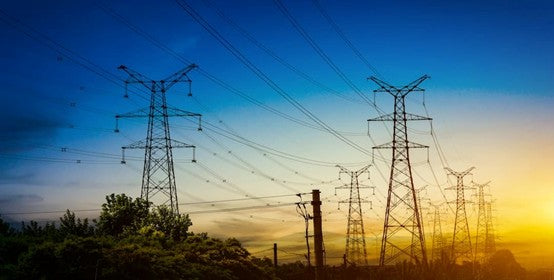
Cherokee Electric Cooperative: Bill Pay, Outage Map, and Customer Service Guide
Cherokee Electric Coop is a local electric cooperative that provides reliable energy services to its members. This article provides important information about this cooperative, such as how to pay your...
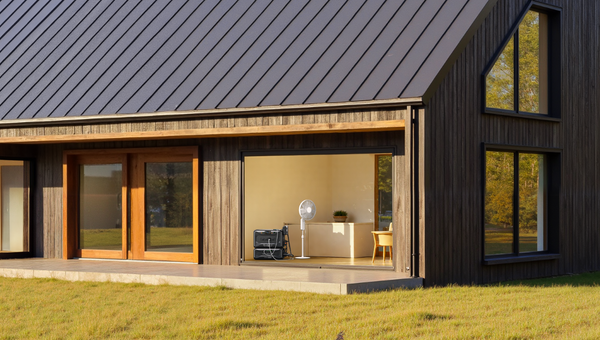
Central Florida Electric Cooperative: Pay Bill | Outage Map | Customer Service | Phone Number
This article will discuss the services offered by Central Florida Electric Cooperative and provide customers with important information about how to pay their bills, check outages maps, get customer service,...
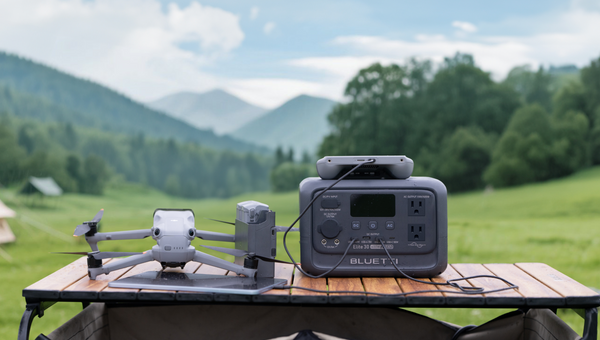
BVU Authority: Pay Bill | Check Outage Map | Customer Service | Phone Number
This article is all about providing readers with vital information about Bvu Authority, one of the leading utilities providers in the United States. We will cover topics such as how...




